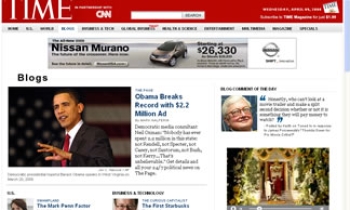It has been around longer than Google, but RSS is finally breaking out of the tech dungeon and into the mainstream -- so where's the advertising angle?
Pop quiz hotshot, when was RSS invented? Here are a couple of hints: it's older than the iPod and older than Google. Give up? 1997, when RSS was released by Netscape. Since then, Netscape dropped RSS and it bobbled around between obscure software companies before recently emerging as a force among early adopters.
RSS (it stands for "really simple syndication") typically comes in the form of a feed. These feeds are usually organized and read in an RSS feed reader (many of which can be downloaded for free). Feed readers include NewsGator and FeedDemon, among others; Apple has an integrated RSS reader in its latest operating system, and Microsoft is reputed to be building RSS into Vista, its next generation of Windows. After downloading a reader and subscribing to an RSS feed, users are on their way -- no additional software or technical expertise is required.
An RSS Feed consists of the latest headlines and short teasers from websites of all shapes and sizes; from an obscure candy blog to online publishing institutions like the New York Times and others like iMedia Connection. By subscribing to a multitude of such feeds and organizing them in a tidy index, you can save yourself an individual trip to dozens of websites to see what's new. Of course, if there happens to be a juicy headline and teaser, you can click through to the complete story.
At its essence, RSS is a way for people to absorb a lot of information in a short amount of time. With online content options proliferating rapidly, it's no surprise that RSS is a fast growing and successful tool.
According to blog marketing solutions provider Pheedo, clickthrough rates (CTR) for RSS articles range from seven to 11 percent. The reason that CTRs are high for RSS is, well, really simple: users are fully opted-in and highly qualified due to the narrow focus of many RSS feeds. That's fertile ground for relevant advertising.
But before we get into RSS advertising options, let's look at the size of today's RSS universe.
According to the Pew Internet and American Life Project, about six million U.S. adults are subscribed to RSS feeds, and in a study by Slashdot, 73 percent of RSS subscribers said they will increase their use of RSS [LINK: ]. Growth is also expected to come from new RSS subscribers when the next version of Internet Explorer 7 launches later this year with an RSS reader built in. But don't worry about supply. Feeds outnumber existing users two-to-one, so there's sure to be something for everyone who's even slightly interested. A recent visit to Feedster, an RSS search engine and ad network, reveals that almost 12 million feeds are currently searchable. While this is good for the growth and adoption of RSS, it may leave marketers wondering where to start.
RSS ad servers
Many marketers are just beginning to think about RSS, but companies like Kanoodle, Google, Yahoo! and Pheedo have been considering it for some time. In fact, each of those companies provides products for serving contextually based ads to RSS feeds. Say a feed features the headline, "Rediscovering Hawaii." Using one of the available RSS contextual advertising products, a travel company could be represented next to the RSS listing with an ad for airline tickets. In the example below, you'll see that a development tool for XAML accompanies an RSS listing on the subject.









